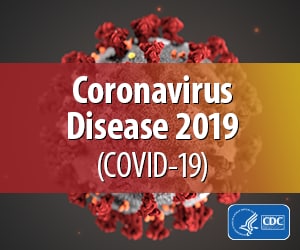North Carolina Division of Public Health: Engaging Community and Faith Leaders in Mental Health and Suicide Prevention
Recipients of the National Initiative to Address COVID-19 Health Disparities Among Populations at High-Risk and Underserved, Including Racial and Ethnic Minority Populations and Rural Communities grant are telling their success stories of how they are addressing COVID-19-related health disparities and advancing health equity through programs and activities funded by the grant.
Challenge
The COVID-19 pandemic significantly impacted mental health, especially in rural and disproportionately affected communities. Emergency room visits for mental health crises in the United States were higher in mid-March through October 2020, during the COVID-19 pandemic, compared with the same period in 2019.1
With funding from the Centers for Disease Control and Prevention’s National Initiative to Address COVID-19 Health Disparities Among Populations at High-Risk and Underserved, Including Racial and Ethnic Minority Populations and Rural Communities, the Division of Public Health’s Chronic Disease and Injury Section, within the North Carolina Department of Health and Human Services (NCDHHS), established practical, needed solutions in their communities to mitigate the adverse effects of COVID-19 on mental health.
Solution
The NCDHHS Injury and Violence Prevention Branch’s Suicide Prevention Team used COVID-19 Health Disparities Grant funds to promote mental healthcare and suicide prevention by training community and faith leaders on evidence-informed strategies that address increased risk factors associated with mental health, including social isolation, lack of community connectedness, and limited access to mental healthcare providers.
Another primary strategy was to focus on training about the safe storage of firearms and suicide prevention, and address the lack of providers who use CALM (Counseling on Access to Lethal Means) and ASIST (Applied Suicide Intervention Skills Training). CALM teaches participants how to help those at risk for suicide, and ASIST is training on how to reduce access to the methods people use to commit suicide.
Outcome
The Suicide Prevention Team partnered with community and faith leaders to provide evidence-informed prevention strategies emphasizing cultural competence and awareness, outreach and education, community partnerships, accessible and affordable services, and training and support. The program focuses on disproportionately affected communities, including rural, Black, Indigenous, and People of Color (BIPOC) communities, and it addresses service gaps for suicide care.
To support faith leaders, the team partnered with two suicide prevention training programs: LivingWorks and the Faith Leaders for Life Program. The team identified faith leaders as critical partners for collaboration because of their importance as the first point of contact for individuals and families experiencing mental health issues.
1 Holland KM, Jones C, Vivolo-Kantor AM, et al. Trends in US Emergency Department Visits for Mental Health, Overdose, and Violence Outcomes Before and During the COVID-19 Pandemic. JAMA Psychiatry. 2021 Apr 1;78(4):372-379. doi: 10.1001/jamapsychiatry.2020.4402. PMID: 33533876; PMCID: PMC7859873.
This grant is funded through the Coronavirus Response and Relief Supplemental Appropriations Act, 2021. The views expressed in this material reflect the opinions of grant recipient authors and do not necessarily reflect the official policies of the CDC; nor does mention of trade names, commercial practices, or organizations imply endorsement by the US Government.
